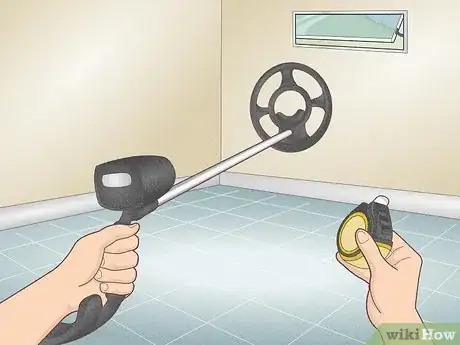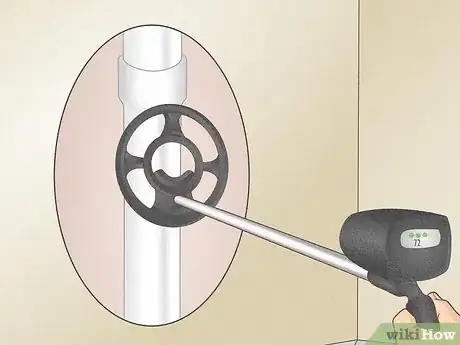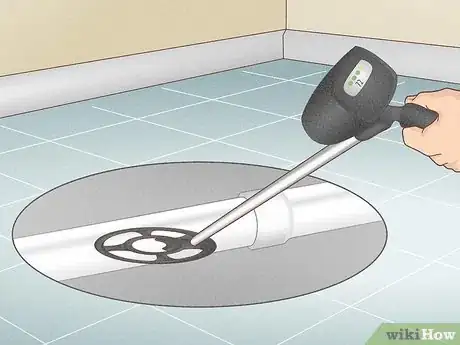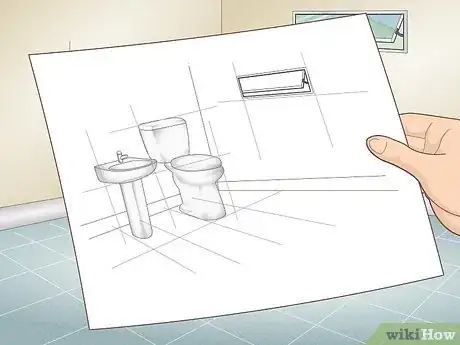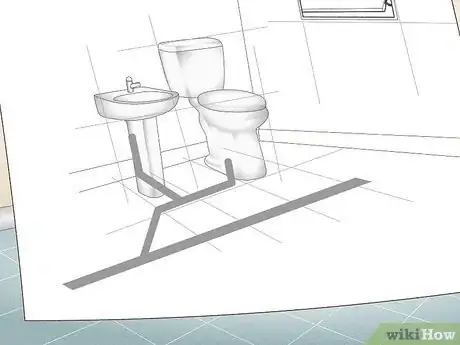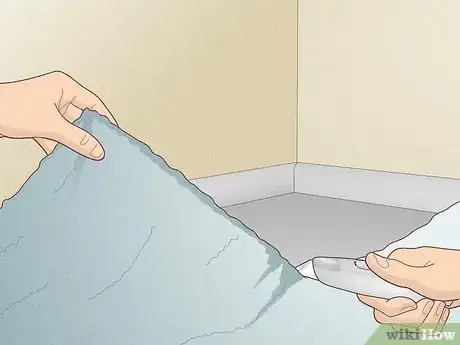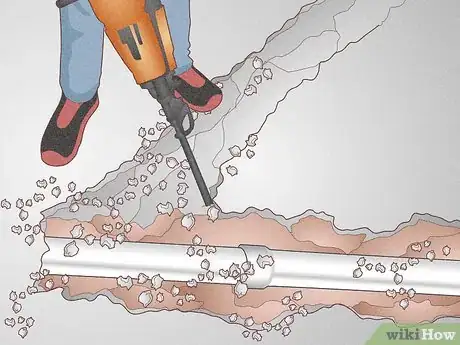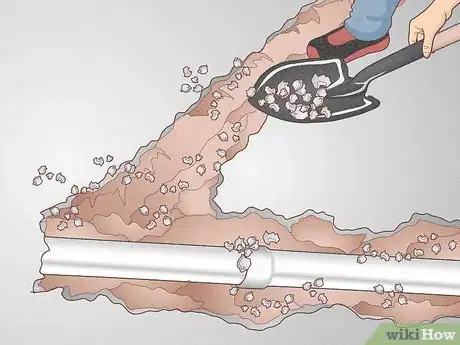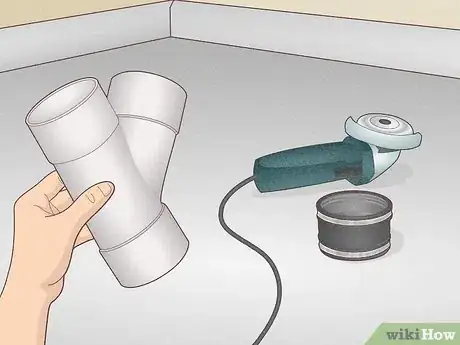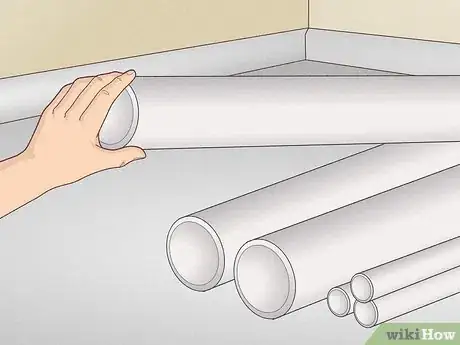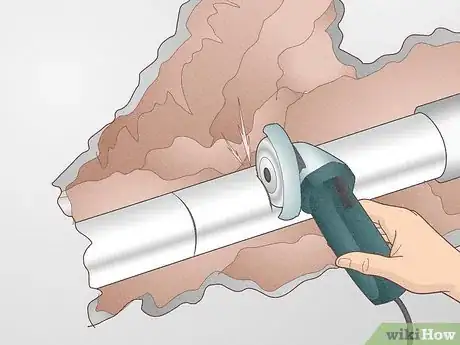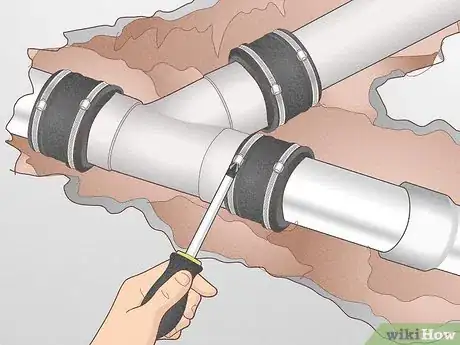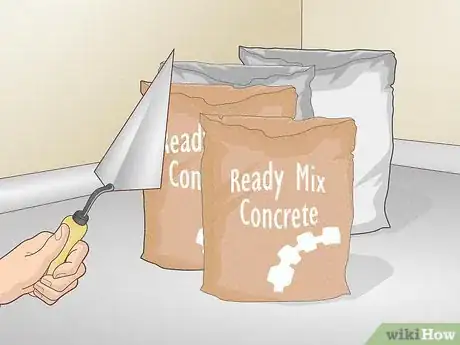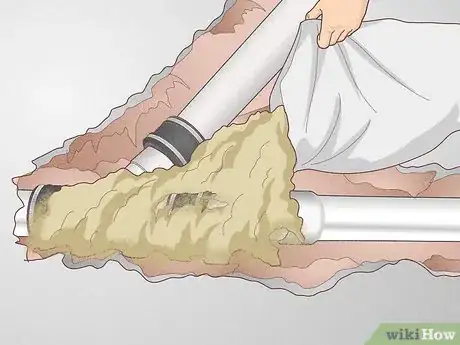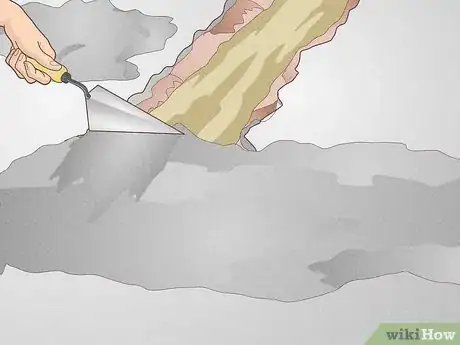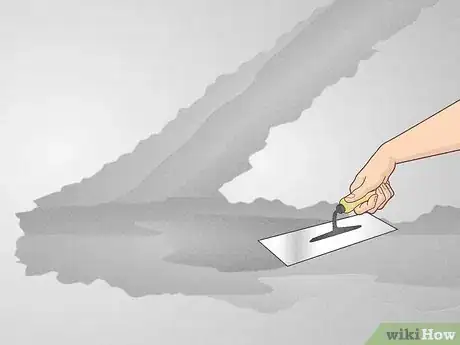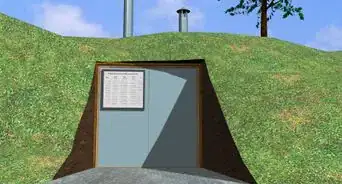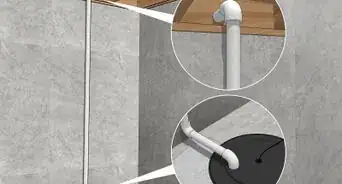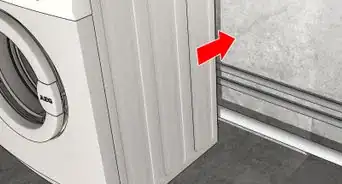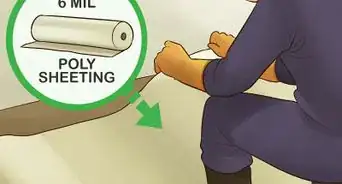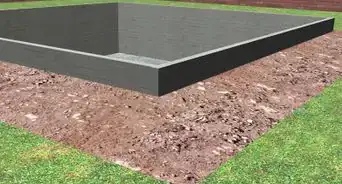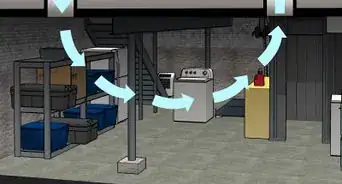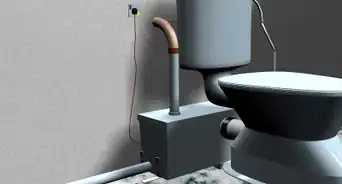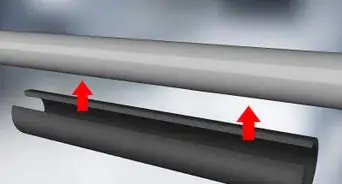X
wikiHow is a “wiki,” similar to Wikipedia, which means that many of our articles are co-written by multiple authors. To create this article, 13 people, some anonymous, worked to edit and improve it over time.
This article has been viewed 39,129 times.
Learn more...
Adding a bathroom to your basement can be a fairly long and complicated process. This article will get you through the initial stage of this project, the rough plumbing. The steps are based on personal experience and offer a straightforward guide to the various aspects of the project. Be sure to check with local building codes when deciding the placement of the new sink and toilet!
Steps
Part 1
Part 1 of 4:
Preliminary Thinking
-
1Gather your materials:
- Metal detector
- Scratch paper
- Tape measure
-
2Identify the main waste stack that goes from the upstairs bathroom to the sewer.
- This will be a vertical cast iron pipe, more than likely 4" in diameter.
Advertisement -
3Detect the cast iron pipe leading from the main waste stack to the sewer using a metal detector.
- This is the pipe in the ground that the new toilet and sink will flow in to.
-
4Identify where you want the sink and the toilet to be placed in the basement.
- A crude drawing may be helpful to visualize where the you want the new sink and toilet in relation to the existing pipe.
- This will also help you when you measure out the length of PVC you'll need.
-
5Plan the location of the new PVC pipe that will connect the new toilet and sink to the cast iron pipe in the ground.[1]
- It is recommended that it be a 45 degree PVC pipe that attaches to the existing cast iron to help with the flow of waste.
- Be sure to note that the PVC setup will vary depending on where the sink and toilet will be placed.
Advertisement
Part 2
Part 2 of 4:
Breaking the Floor
-
1Prepare your materials:
- Box cutter knife/chisel
- Safety Glasses
- Chalk/tape
- Jackhammer
- Bucket/spade
- Plastic curtain
-
2Remove any tile/carpeting/etc to expose the concrete above the spot you chose to place the new pipe.
-
3Draw an outline in chalk or tape on the concrete floor where you will need break it, based on where you decided the new toilet and sink will go.
- Hanging a plastic curtain around the work area can help contain dust!
-
4Break the floor to expose the necessary section of the cast iron pipe as well as the path that the new pipe will lay for the toilet and sink.
- This can be done with a jackhammer which can be rented at a home improvement store.
- Safety glasses should be worn when using tools![2]
-
5Clear out the concrete debris and dig out the sand so the new pipe has a place to lay.
Advertisement
Part 3
Part 3 of 4:
Assembling the New Pipe
-
1Collect the needed materials:
- Necessary sections of PVC as determined in Part 1
- PVC primer and cement
- Saw (hand or electric) for cutting PVC into shape
- Angle grinder
- Band-seal couplings and screwdriver
-
2Purchase the necessary length of PVC pipe that the new toilet and sink will flow into.
-
3Connect the pipe together in the shape that fits your design.
- Use PVC primer and cement to fasten the sections together
- Due to chemical fumes, make sure the area is well ventilated! [3]
-
4
-
5Attach the new PVC to the cast iron with band-seal couplings.
- Make sure that there is enough PVC on either side of the wye so that the band-coupling has enough of both PVC and cast iron pipe to attach to!
- Cleaning the cast iron pipe makes for a tighter seal!
Advertisement
Part 4
Part 4 of 4:
Rebuilding the Floor
-
1Prepare the materials you'll need:
- Bags of sand
- Bags of Ready Mix concrete
- Mason trowels
-
2Cover over the pipe over with sand.
- Make sure the new pipe has a slope of at least 1/4" every foot flowing into the cast iron pipe. [6]
-
3Cover over the sand with approx. 4" of concrete so that just the pipes that the toilet will sit on and the sink will connect to are exposed.
-
4Smooth out the concrete with the mason trowel so that new flooring can be added later.
Advertisement
Community Q&A
-
QuestionWhat is the difference between a 10" and a 12" rough out?
 Community Answer2 inches, which can result in your toilet not fitting (because now the wall would be in the way).
Community Answer2 inches, which can result in your toilet not fitting (because now the wall would be in the way).
Advertisement
Warnings
- Make sure that no water is run in the house while the pipe is being cut and while the new connection is drying, all water will flow through that pipe⧼thumbs_response⧽
Advertisement
References
- ↑ https://www.youtube.com/watch?v=gqwAETNyTnE
- ↑ http://elcosh.org/document/2157/d000148/using-the-jack-hammer-safely.html
- ↑ https://time.com/94361/paint-and-glue-fumes-mess-with-your-brain-for-decades/
- ↑ https://www.youtube.com/watch?v=gqwAETNyTnE
- ↑ https://safework.sa.gov.au/workplaces/plant-tools-and-vehicles/angle-grinders
- ↑ https://www.archtoolbox.com/materials-systems/plumbing/pipe-slope.html
About This Article
Advertisement
